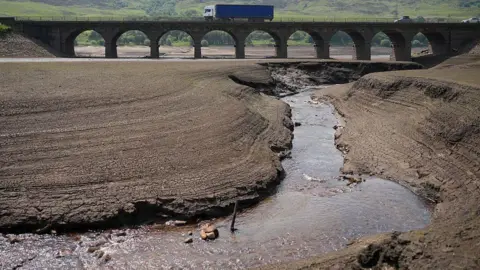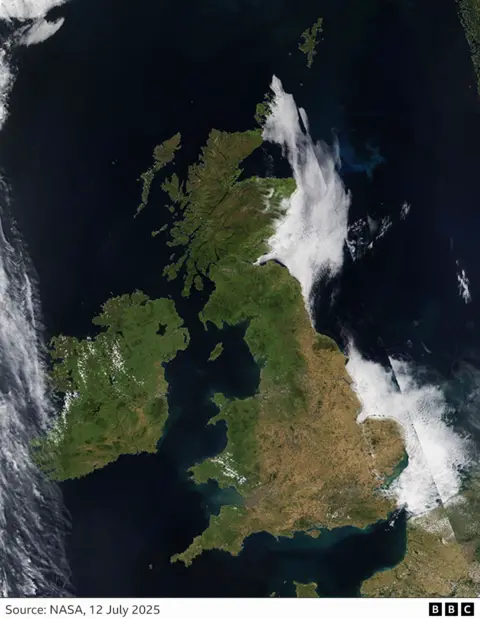Mark Poynting
Climate reporter, BBC News

 Getty Images
Getty Images
Reservoirs in the Midlands are showing lower levels than usual
The East and West Midlands have officially entered drought, joining the North West and Yorkshire, after yet another hot and dry spell of weather.
The announcement by the Environment Agency follows England's driest start to the year since 1976, which has left many rivers across the Midlands at extremely low levels.
Declaring a drought is a public sign that water companies might introduce restrictions on water use if they aren't already in place. That can involve hosepipe bans, but not always.
Droughts are driven by natural weather patterns, but climate change and our growing use of water are raising the risks of water shortages, the Environment Agency says.
Most of the rest of the England is in a status of prolonged dry weather - the category below drought - except for parts of the South West, East and South East.
There are no official droughts in Northern Ireland or Wales, although Mid and South Ceredigion in west Wales is in "developing drought".
Scotland does not declare droughts but monitors "water scarcity". Parts of eastern Scotland are in "moderate" scarcity – the second most extreme category – which means there is "clear" environmental impact.
In England there is no single definition of drought, but it is ultimately caused by a prolonged period of low rainfall, which has knock-on effects for nature, agriculture and water supplies.
England had its driest spring in more than 100 years, followed by its warmest June on record.
Some areas experienced three heatwaves in quick succession in June and July, with the intense warmth drawing more moisture out of the soil.
So while it may be raining where you live today, it's unlikely to be enough to bring water levels back to normal across the country.
The dry conditions can even be seen from space, with much of England much browner than usual.


The National Drought Group – which manages preparations for dry conditions in England – met on Tuesday morning and announced that it had "stepped up" its response.
It said that conditions in the Midlands had deteriorated since early June.
The National Drought Group is made up of the Environment Agency, government, Met Office, water companies and others.
The Environment Agency (EA) declares droughts in England based on reservoir levels, river flows and how dry the soil is, alongside long-term weather forecasts.
In a "reasonable worst-case scenario" - where regions get 80% of their long-term average rainfall - another five regions across central and southern England could enter drought status by September, joining Yorkshire and the North West, according to the EA.
Current long-term forecasts suggest roughly normal levels of rainfall over the next few months, however.
If further droughts are declared, it does not automatically mean that hosepipe bans will be put in place, but these can often follow.
Hosepipe bans have already started for millions of people in Yorkshire.
Bans in other regions, such as parts of Kent, Sussex and the Thames region, will come into effect in the second half of the month, but these places are not in drought status at the moment.
Without further "substantial" rain, some water companies may need to implement further drought measures, including more hosepipe bans, according to evidence given to the National Drought Group.

 Getty Images
Getty Images
Hosepipe bans can often follow official drought declarations
The EA warned last month that England's water supplies could face a shortfall of six billion litres a day by 2055 without dramatic action, driven by rising temperatures, population growth and other factors.
Climate change is expected to lead to drier summers on average, while more intense heatwaves mean more water can be lost via evaporation.



 Movie
Movie 1 month ago
120
1 month ago
120 






![Presidents Day Weekend Car Sales [2021 Edition] Presidents Day Weekend Car Sales [2021 Edition]](https://www.findthebestcarprice.com/wp-content/uploads/Presidents-Day-Weekend-car-sales.jpg)



 English (United States)
English (United States)